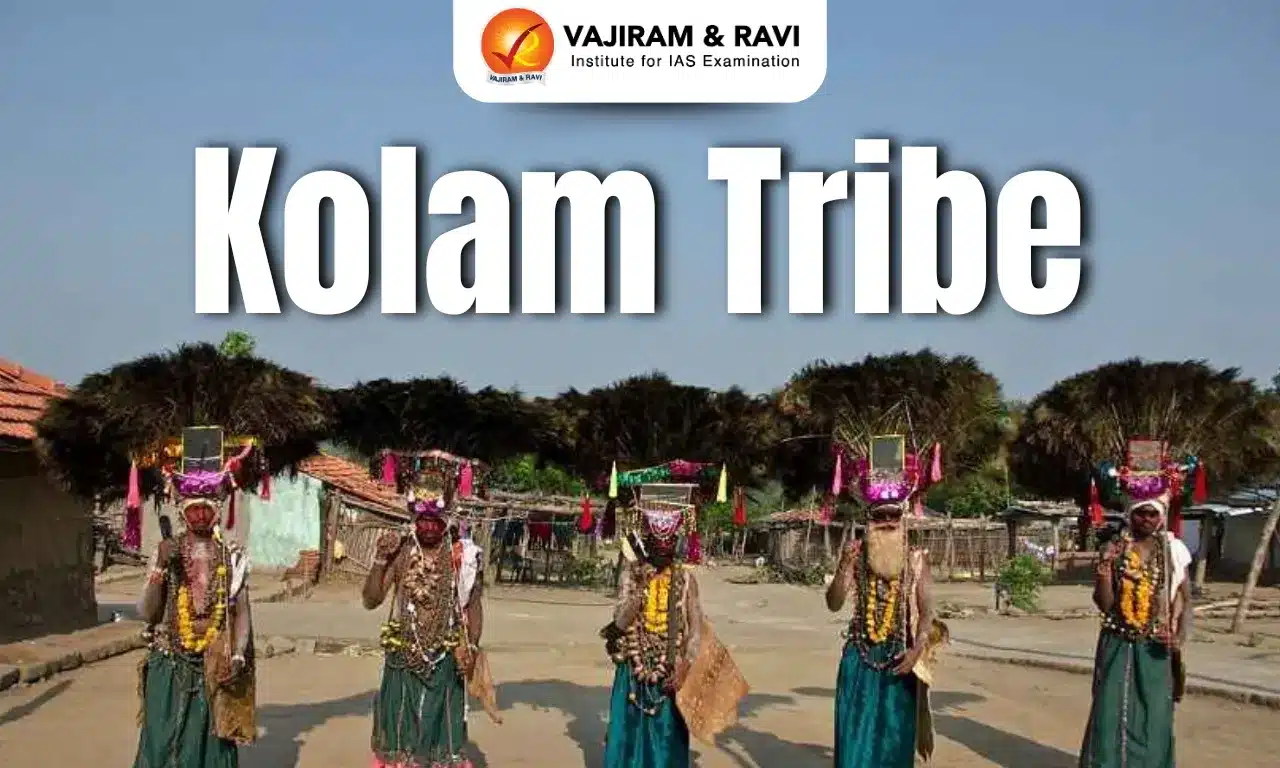Kolam Tribe Latest News
Recently, a pilot bamboo plantation project was initiated to restore traditional livelihoods of Kolam tribal people in Adilabad district of Telangana.
About Kolam Tribe
- Kolam tribes, also known as Kolamboli, Kulme and Kolmi, occupy a major portion of Madhya Pradesh.
- These tribal groups are reckoned as scheduled tribes and apart from Madhya Pradesh they reside in some parts of Maharashtra and Andhra Pradesh.
- They are listed as Particularly Vulnerable Tribal Group (PVTG).
- History:
- Around the twelfth century, the Kolam served as priests for the Gond, representing some of their important gods.
- It is generally accepted that the Kolam descended from the original population in the area.
- Since they now live near the Gond, they have adopted much of the Gond lifestyle.
Society and Tradition of Kolam Tribe
- The Kolam people are divided into different clans, like Chal Deve, Pach Deve, Saha Deve, and Sat Deve.
- Marriages between the same clans are not permissible.
- The Kolams use the name of their clans as their surnames.
- Their society is patrilineal, meaning that the line of descent is traced through the males.
- Occupation: The Kolam are mainly farmers and forest workers. In times past, they used shifting cultivation on the hill slopes.
- Language: They speak a Dravidian language called Kolami, and nearly all of the adults also speak Marathi, Telugu, or Gondi.
- For writing they uses the famous Devnagari script.
- The Kolam people celebrate different rituals that include Matya or Churaghali, Bai-Baki, Sati, Jaitur Pooja, Waghai Pooja etc.
Source: TH
Last updated on December, 2025
→ Check out the latest UPSC Syllabus 2026 here.
→ Join Vajiram & Ravi’s Interview Guidance Programme for expert help to crack your final UPSC stage.
→ UPSC Mains Result 2025 is now out.
→ UPSC Notification 2026 is scheduled to be released on January 14, 2026.
→ UPSC Calendar 2026 is released on 15th May, 2025.
→ The UPSC Vacancy 2025 were released 1129, out of which 979 were for UPSC CSE and remaining 150 are for UPSC IFoS.
→ UPSC Prelims 2026 will be conducted on 24th May, 2026 & UPSC Mains 2026 will be conducted on 21st August 2026.
→ The UPSC Selection Process is of 3 stages-Prelims, Mains and Interview.
→ UPSC Result 2024 is released with latest UPSC Marksheet 2024. Check Now!
→ UPSC Prelims Result 2025 is out now for the CSE held on 25 May 2025.
→ UPSC Toppers List 2024 is released now. Shakti Dubey is UPSC AIR 1 2024 Topper.
→ UPSC Prelims Question Paper 2025 and Unofficial Prelims Answer Key 2025 are available now.
→ UPSC Mains Question Paper 2025 is out for Essay, GS 1, 2, 3 & GS 4.
→ UPSC Mains Indian Language Question Paper 2025 is now out.
→ UPSC Mains Optional Question Paper 2025 is now out.
→ Also check Best IAS Coaching in Delhi
Kolam Tribe FAQs
Q1. Where is the Kolam tribe mainly found?+
Q2. What is the primary occupation of the Kolam tribe?+
Tags: kolam tribe

















